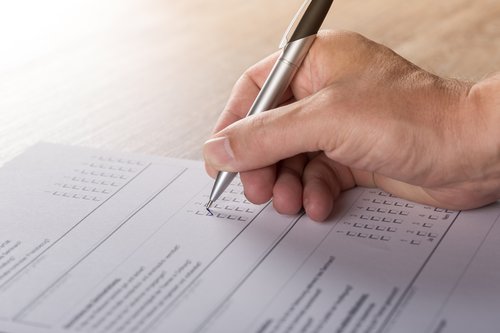Today I want to regale you with one of my favorite passages from an underappreciated book, “The Small Big: Small Changes That Spark Big Influence,” and tell you why you should distrust what people *tell you*. Not in a paranoid, Howard Hughes way, but in a savvy, Sherlock Holmes way:
“The truth is, not only are people pretty poor at recognizing what will influence their future behavior, it turns out that they are also not that well attuned to what persuaded them after the event either. As part of a TV news magazine program one of us was asked to assist with a segment of the show that sought to identify the reasons why people might be persuaded to help others in a series of everyday (nonemergency) settings. At a busy New York City subway station we hired researchers to count the number of commuters who donated to a street musician as they walked past.
After a short time a small change was made to the situation that had an immediate and impressive impact. Just before an approaching (and unsuspecting) commuter reached the musician, another person (who was in on the act) would drop a few coins into the musician’s hat in view of the approaching commuter. The result? An eight-fold increase in the number of commuters who chose to make a donation.
In a series of post-study interviews with commuters who did donate, every one of them failed to attribute their action to the fact that they had just seen someone else give money first. Instead they provided alternative justifications: “I liked the song he was playing”; “I’m a generous person”; and “I felt sorry for the guy.”
That people are generally poor at recognizing the factors that influence their behaviors both before and after an event raises an immediate implication for any business or organization that invests time, effort, and often considerable dollars asking their customers and clients what actually drives their buying decisions and behaviors. Although we are confident that many customers will happily provide answers, we are less confident that the answers they provide will be an accurate reflection of what happens in reality, resulting in marketing strategies based on those answers having high failure rates.”
— Steve Martin, Noah Goldstein, and Robert Cialdini (The Small Big, pages 4–5)
As many of you know, I’m very critical of user surveys and interviews. The more you learn about the mind and human behavior, the less you take the conscious mind all that seriously. It’s a fun, kind of wimpy narrator strapped to the top of an incredible supercomputer–our sub/unconscious mind. While our conscious mind always has an explanation for why we did what we did, that answer is often wrong–hilariously wrong. And that’s the problem with surveys and interviews. They’ll get you plenty of conscious-mind explanations, but the validity of those… well, it’s suspect.
So am I saying that you should never interview or survey your customers?
No.
I’m saying that you need to realize the limits of what surveying and interviewing can tell you.
They’re not very good at helping you determine *why* someone did something, or for figuring out whether or not they *will* do something.
“Would you buy a WiFi connected toaster for $150?” “You bet!”
“Would you like a toothbrush that you never have to put toothpaste on? A brush with self-pasting bristles?!” “Yesx1000!”
If you’re using survey & interview answers like this as promising data for your idea… please stop.
Which brings us to the next point: Your interview and survey questions shouldn’t even attempt to understand *why* your customers do what they do. Instead, they should instead be geared towards figuring out what their specific behaviors in a given domain are.
If you’re interviewing a customer, see yourself as a private detective, a fly on the wall. Your job is to take notes on what they *do*, not what they say they do. Be an observer, not a psychoanalyst.
For example, you should ask them questions like:
- Can you tell me about the last thing you purchased online? What was it? What was your process for finding it, and then purchasing it?
- Are you comfortable with showing me your order history on eBay?
- etc.
Through these types of questions, you can learn a lot of useful information about their current behavior patterns. Since most people don’t deviate very much from these patterns, this information will be quite useful to you when you’re planning out your product or service — since it needs to fit into the lives and habits of your potential customers.
You should not ask questions like:
- What do you like about online shopping?
- Why did you click on what you just clicked on?
- Why did you buy the last thing you purchased?
- If we gave you access to this product, would you use it?
The answers you get from these questions are likely to be almost complete BS. People are amazing at coming up with just-so stories to explain their behaviors, and will gladly conjure up a tale to satisfy you, the interviewer (even if they don’t realize they’re engaging in fable-tellin’).
*END RANT*
If you want to learn more about the proper way to do customer/user testing (and interviewing), check out this article. I wrote it to provide you, dear reader, with a step-by-step guide to doing useful customer observations and interviews.





